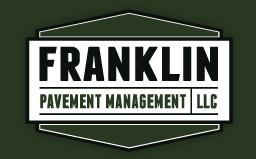BASE REPAIR SERVICES
BASE REPAIR
Pavement base failures are a common problem throughout Southern Louisiana. Structurally weak soil, flat terrain resulting in poor drainage, and a high water table are the cause of most base failures in our region. Before any repairs to the base begin, an investigation to determine and correct the root cause will prevent future more costly repairs.
The base repair process consists of the following steps:
1) The area to be repaired is marked out with paint.
2) The perimeter of the failure is saw-cut to create a clean vertical wall.
3) The damaged base, sub-base, and any soft sub-grade material are excavated and disposed of.
5) Base material is then placed in multiple lifts, with each lift being compacted to the appropriate density.
If a solid sub-grade is not found, then additional excavation, geotextile fabric, geogrid, rip rap, or a combination may be required.
STONE BASE REPAIR
A stone base is the most durable and maintenance-free solution for base repairs. The major benefit in Louisiana is a stone base’s ability to allow water to pass through, preventing built-up moisture on one side that will further weaken the sub-grade. Moisture buildup often results in hydraulic pressure, which can cause pavements to bulge upward, creating bumps and cracks. Asphalt is flexible and performs best over a similar material such as stone. Placing a rigid material below asphalt will cause the surface to flex at different rates, creating cracks around the perimeter of the less flexible material and allowing water to penetrate the surface.
ASPHALT BASE REPAIR
Asphalt base repairs (also called full depth asphalt patching) provide a solid mass of asphalt. Many municipalities prefer this method over others for both its ability to bridge a weak sub-grade and its ease of construction. There are, however, several disadvantages to consider when using asphalt to repair a base and or sub-grade. First, a solid mass of asphalt will be less flexible than the asphalt that surrounds it, often causing cracks around the perimeter, further damaging the base and sub-grade. Second, in Southern Louisiana, more often than not, a wet base and sub-grade are what caused the pavement to fail; since water takes the path of least resistance, the failed pavement is located where subsurface water is collecting. When stone and soil are replaced with asphalt, the water is displaced -- creating a larger area around the repair to collect water and further damage a greater area. Finally, if the pavement is a future candidate for soil cement stabilization, the patches will need to be removed before that process can begin. The expensive processes of removing thick sections of asphalt will also re-expose the poor sub-grade, restarting the cycle that is often repeated over and over again on the same section of pavement.
CONCRETE BASE REPAIR
Some customers prefer concrete to repair base and sub-grade problems. This is performed much like an asphalt base repair, with the option of pouring to the finish grade or leaving it 2” low and topping it off with asphalt. The advantages are the same as those with asphalt but with greater bridging strength. This method includes all the same disadvantages as asphalt base repairs, with increased cracking due to a greater thermal differential between asphalt and concrete. Asphalt milling costs increase especially if concrete patches are not visible at the surface, due to the fact that production is slowed to reduce the impact when the milling equipment makes contact with the harder material. If these precautions are not taken, more costly damage to the milling equipment is inevitable.




